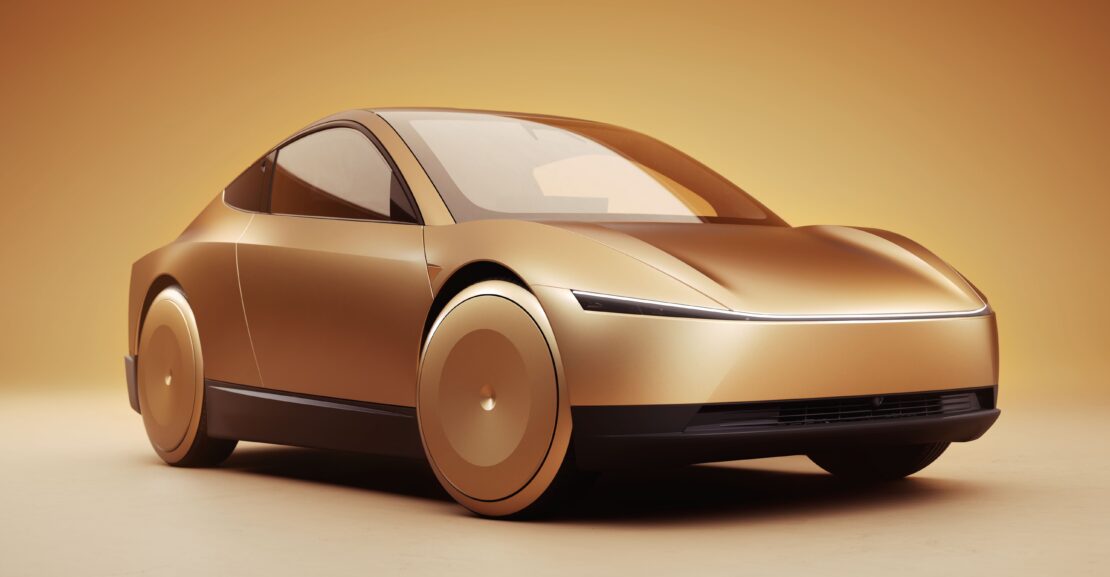The recent Tesla event wasn’t just about showcasing products ready to hit the market but also about giving us a glimpse into the Future of autonomy, affordable transportation, and humanoid robots #Tesla Robotaxi. Elon Musk and Tesla continue their path toward solving the complexities of self-driving technology, unlocking new possibilities for cleaner, safer, and more efficient transportation.
Tesla’s Autonomous Vehicle Breakthrough
Elon Musk arrived on stage in a futuristic robo-taxi, demonstrating Tesla’s leap in autonomous vehicle design. The cybercab, a sleek, minimalist vehicle, is unlike anything on the road today—no steering wheel, no pedals, and designed for efficiency in mass production.
The butterfly doors and minimalist interior emphasize Tesla’s design philosophy that the best part is no part. With a massive touchscreen and no mirrors, this cyber-cab is tailored for the Future of urban transport and is expected to cost below $30,000 once production ramps up.
The event highlighted that autonomy is not a distant dream. Tesla’s Full Self-Driving (FSD) vehicles are already operating for hours at a time without driver intervention. The plan to roll out unsupervised FSD in Texas and California next year signals a significant leap towards full autonomy, with robo-taxis set to become a reality by 2026.
Table of Contents
Rise of Humanoid Robots
In addition to autonomous vehicles, the event offered an exciting look at Tesla’s humanoid robot, Optimus. While still in development, Optimus has the potential to revolutionize the way humans interact. Elon Musk envisions these robots becoming an essential part of daily lives, performing tasks such as caregiving, chores, and even assisting in education.
Tesla’s focus on scalability means these robots could eventually be affordable for everyone, with the potential to become the most valuable product you could ever buy.
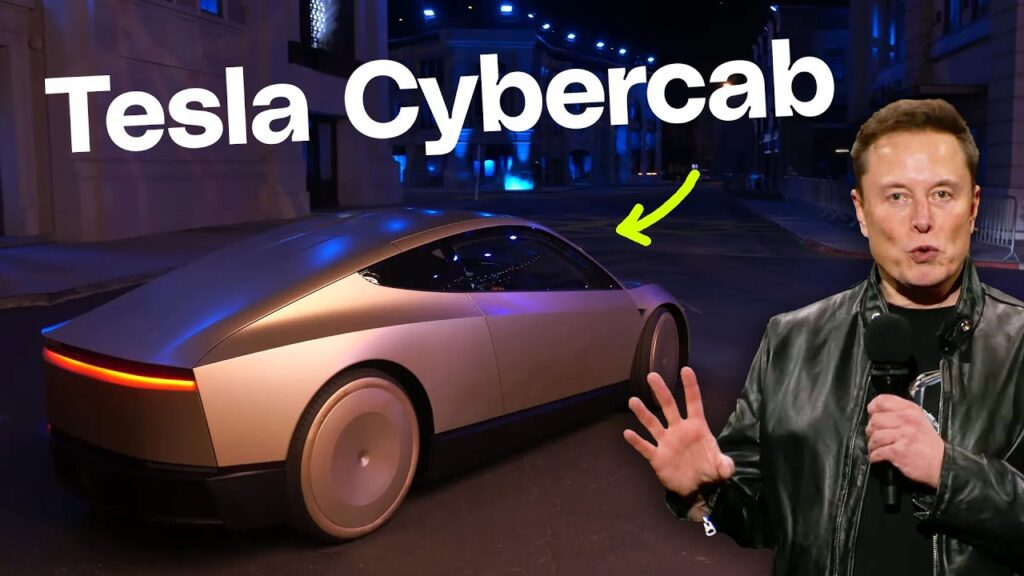
Tesla Robotaxi A Vision for the Future
Elon Musk made it clear that the goal is not just to create innovative technology transform citys and improve the quality of life. By reducing the need for personal car ownership and maximizing the utility of robo-taxis, we could reclaim space currently occupied by parking lots and turn it into parks and greener areas. This vision of a cleaner, more sustainable future is at the core of Tesla’s mission.
While sceptics may continue to doubt Tesla’s ambitious plans, the company’s track record of turning the impossible into reality speaks for itself. From reusable rockets to mass-market electric vehicles, Tesla has consistently proved the naysayers wrong. With advancements in autonomy and robotics, Tesla is building the foundation for a future that is safer, cleaner, and more efficient.
Elon Musk presents Cybercab, Tesla Robotaxi, with which he wants to revolutionize the sector.
The company will begin mass-producing the two-door electric vehicle without a steering wheel in 2026, and the tycoon says it will cost less than $30,000. From crowd to crowd. Days after its premiere at a political rally alongside Donald Trump, the wealthiest man in the world, Elon Musk, He presented Cybercab on Thursday.
It is an electric car with a futuristic design with two doors that open like wings, without a steering wheel or pedals, a Tesla Robotaxi with which Tesla wants to revolutionize autonomous driving with the help of artificial intelligence. The demonstration showed little beyond the fact that the prototypes are capable of moving without a driver along a short closed circuit. It was also possible to see that Elon Musk has taught his robots to dance or something similar.
Musk showed off the new models and a spectacular limousine bus, Robovan. The Tesla boss assured that the company will begin producing Cybercabs in 2026 – a deadline subject to regulatory approvals – and that their cost will be less than $30,000 (about 27,500 euros at the current exchange rate). However, if it does not happen in the end, it will not be the first time that the company has broken a promise in this regard.
The presentation event of the Tesla Robotaxi was delayed several months after he ordered changes to the prototype. Musk already formulated his new forecast in a somewhat convoluted way: “Probably, well, I tend to be a little optimistic on deadlines, but in 2026. Before 2027, let me put it like this.
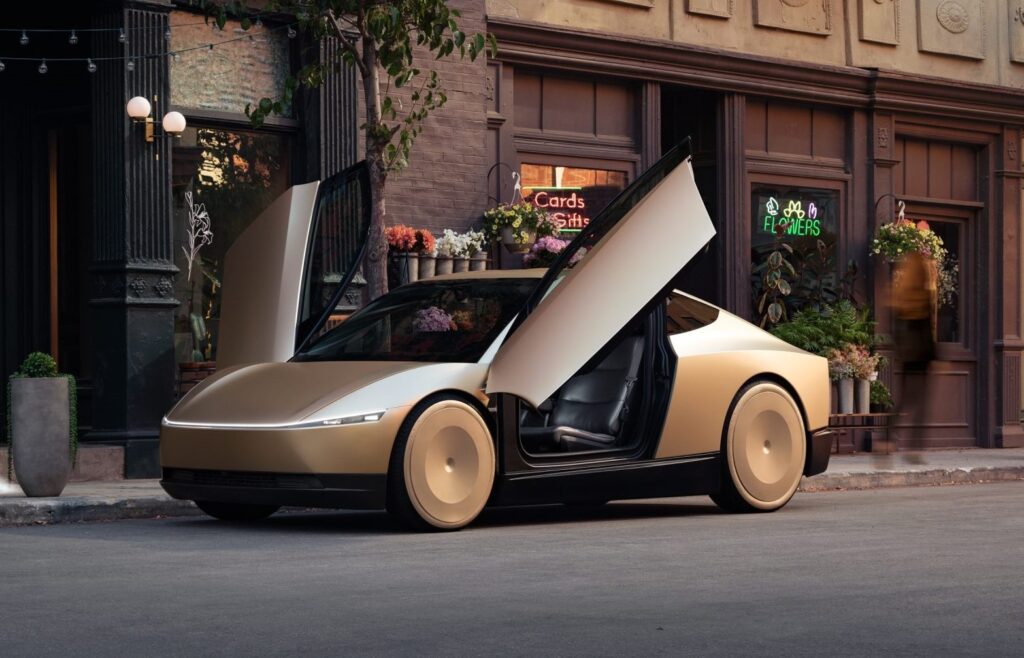
The Cybercabs will cost 20 cents per mile to operate over time. “The cost of autonomous transport will be so low that it can be considered individualized public transport,” he said. The Tesla Robotaxi will use inductive chargers and will not need power outlets. They will also rely solely on cameras and artificial intelligence, without the need for other hardware that robotaxis use.
However, there was no information on production plans, cost of models, expected profitability and other details that investors and analysts are waiting for; they believe that Tesla is betting a large part of its value on the success of this product or, in general, on self-driving cars. There was also no information on how it will achieve fully autonomous driving. It was more of a conceptual presentation.
Tesla is at risk of posting its first-ever decline in deliveries this year as purchase incentives have failed to attract enough customers to its electric vehicle lineup. Steep price cuts have also squeezed profit margins. The company hopes to launch a new, more affordable model next year to revive demand.
The launch event, called We, Robot, took place at Warner Bros. studios in Burbank, outside Los Angeles, California, and was staged in a movie-like setting. Musk explained that the event started with a considerable delay due to a medical emergency for one of the attendees. More than three million people followed it simultaneously on the social network X at some point.
Several of the company’s Optimus robots served as hosts or attractions. Some danced mechanically on a glass platform while music played, and others were in the guest area. Cameras repeatedly focused on one place at the bar as if to act as a waiter, but beyond greeting and moving in somewhat absurd ways, he was never seen finishing a drink. This is the product with which Musk wants to make a billion dollars a year, but that is clearly a long way off.
The star of the evening, however, was the Cybercab. Musk rode in one and praised the virtues of self-driving cars. Most of the time cars don’t do anything, but if they’re autonomous they can be used five times as often, maybe 10 times as often, he said. He compared the fact that cars have drivers to the days when elevators had elevator operators.
The autonomous Future is already here. We have 50 fully autonomous cars here tonight. You’ll see the Model Y and the Cybercab—all driverless. You’ll be able to ride in them. They don’t have steering wheels or pedals, so I hope it goes well,” he joked before going on to say that autonomous cars will be ten times safer than those driven by humans. Tesla has had safety issues with the self-driving features of its current models.
The entrepreneur envisions the self-driving car as a mix of Uber and Airbnb, where the driverless car acts as a taxi and vehicle owners can add their vehicles to the fleet when they are not needed. Musk’s plan is, therefore, to manage a fleet of self-driving Tesla taxis that passengers can call through an app. Owners of self-driving cars will also be able to earn money on the app by offering their vehicles, and Tesla will cut their revenue.
According to the company, the other prototype, Robovan, unveiled Thursday, can seat 20 people and can be adapted for commercial or personal use, such as a school or tourist bus, or even as a cargo vehicle.
Tesla finally presents its long-awaited Tesla Robotaxi
Tesla unveils its long-awaited Robotaxi, along with a new Robovan and an upgraded version of its humanoid robot Optimus. However, due to a lack of information, the event may not significantly boost Tesla’s stock price.
Tesla unveiled its long-awaited Cybercab Robotaxi at the We, Robot event held at the Warner Bros. Discovery studio in California. CEO Elon Musk showed off a prototype of the Cybercab, which has no steering wheel or pedals and is expected to cost less than $30,000 (27,000 euros).
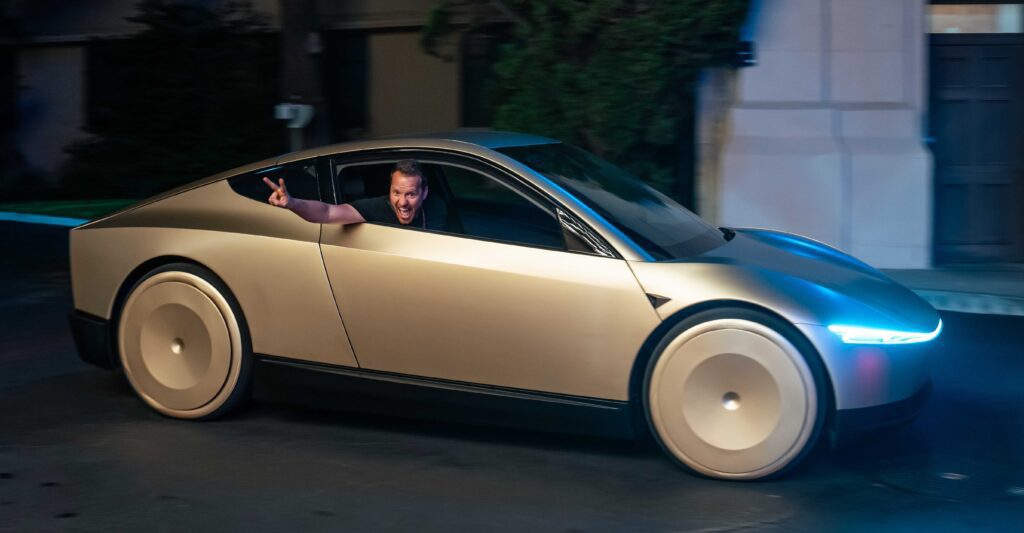
Elon Musk estimated the average cost of running the vehicle to be just $0.20 (0.18 euros) per mile and said consumers would be able to afford one. Autonomous vehicles will rely on cameras and artificial intelligence for navigation.
In addition to the Cybercab, Tesla also unveiled the Robovan, an autonomous vehicle that seats 20 people, and an upgraded version of its humanoid robot, “Optimus.” Musk commented, “With autonomy, you get your life back.” As early as April, Musk had suggested that Optimus could be deployed in Tesla factories by the end of 2024.
Series production of the Cybercab could begin in 2026, possibly earlier. Musk said Tesla aims to start unattended full self-driving (FSD) in Texas and California next year, using the Model 3 and Model Y. He had previously indicated that Tesla hoped to deploy FSD vehicles in early 2025, subject to regulatory approval, although he acknowledged that his timelines have often been overly optimistic.
Tesla Robotaxi: Tesla’s Future Growth Engine?
Tesla has been battling weakening global demand for pure electric vehicles as well as increasing competition from Chinese automakers. Its core business, car sales, has seen year-over-year declines over the past two quarters. The launch of the Robotaxi is seen as a pivotal event for Tesla’s future growth, as it marks a shift in focus from producing affordable cars to autonomous vehicles.
However, the new approach may not be enough to convince investors of Tesla’s growth potential. The company still faces significant regulatory hurdles and will have to earn customers’ trust. Moreover, Tesla Robotaxi efforts need to catch up to competitors such as General Motors’ Cruise and Alphabet-backed Waymo, which already have self-driving vehicles on public roads.
Tesla’s Stock Price Trajectory
Tesla’s stock has underwhelmed, down 4% so far this year versus a 21% rise in the S&P 500. It is the only tech company in the index to have dropped 4% so far this year. Tesla is the only technology company in the Magnificent Seven group to post a negative performance. Its shares have fallen more than 7% since it announced disappointing third-quarter electric vehicle deliveries on October 2.
The company delivered 462,890 vehicles, up 6.4% year-over-year, but fell short of the expected 470,000 deliveries, an 8% annual increase. This shortfall increases the risk that Tesla will record its first-ever annual decline in car sales.
Despite a 70% surge from its April low for the year, fueled by optimism over first-quarter results for its affordable cars, Tesla stock may still be overvalued. The company remains classified as a growth stock, with a price-to-earnings (PE) ratio of 67, versus NVIDIA at 63 and Meta at 30.
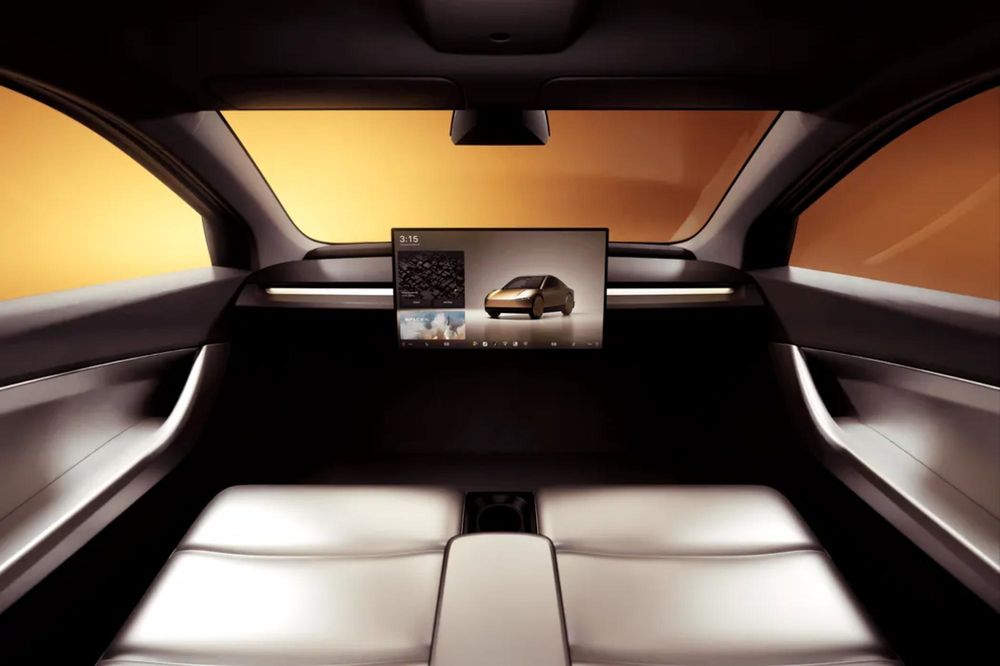
Tesla’s earnings per share (EPS) for the June quarter were $0.42, down 46% year over year. The company is scheduled to report its third-quarter results on October 23, and analysts expect earnings of $0.46 per share, down 13.2% year over year.
Elon Musk’s Tesla Robotaxi is here: Tesla unveils a two-seater car without steering wheels or pedals.
Without a steering wheel or pedals, this is how Tesla Robotaxi has been presented. Although Tesla’s primary business at the moment is the sale of electric vehicles with some driver assistance, These two areas will allow them to reach the Future that they have presented today with the completely autonomous taxi, its version for groups, Robovan and the Optimus robot.
With a style somewhere between the Cybertruck and Tesla cars, the Tesla Robotaxi has been seen circulating through the streets of a Warner Bros film studio in Burbank, California. Riding in it was Elon Musk, CEO of the company and master of ceremonies of the event titled “We, Robot.” He” appeared accompanied by a person dressed in the SpaceX spacesuit, a mix of all his companies.
In his speech, the billionaire said that autonomous vehicles would be 10 to 20 times safer than those driven by humans and could cost as little as $0.20 per kilometre to operate, compared with the $1 per kilometre for city buses. As he gave his speech, driverless vehicles drove around the audience.
Not much has been said about the specifications of this futuristic taxi, except for the lack of a steering wheel, pedals, and a power outlet. According to Musk, the Tesla Robotaxi charges by induction to recover energy wirelessly. The most notable thing is the promise of not depending on any vigilant driver.
The lack of a steering wheel eliminates the possibility of a passenger or an attentive driver taking control of the vehicle. Currently, Tesla’s most advanced semi-autonomous driving system requires the careful monitoring of a driver at all times. To achieve the desired autonomous driving, Tesla has reportedly been mapping the area before the demonstration. However, the company says it does not rely on high-definition maps to power its Full Self-Driving (FSD) driver-assistance feature.
The Tesla Robotaxi is a sporty two-seater model, but for larger groups, the company has introduced the Donovan. In addition to having the same autonomous driving system, it will be able to transport up to 20 people or goods. “If you want to take a sports team somewhere, or you’re looking to reduce the cost of travel to, I don’t know, 5-10 cents per mile, then you can use the Donovan, Musk said On stage, Musk made many promises as usual.
His company plans to launch fully autonomous driving in Texas and California next year. Production of the Tesla Robotaxi is expected to begin in 2026, although the tycoon immediately backtracked, saying it could be before 2027.
It could be available for $20,000 to $30,000, or around €27,500 at the current exchange rate. At that price, the company’s proposed concept is that the cars would never be idle. Owners would be able to offer their vehicles as taxis when they are not needed and share the revenue with Tesla.
Another big surprise was the Optimus robot, which was finally seen in motion at a Tesla presentation. Remember that Musk presented this project for the first time in 2021 with a man dressed as a robot on stage.
The company has been showing off its qualities and advances in the last year, competing for attention with other companies. Musk promised that this robot would revolutionize civilization. It will display images of Optimus in a familiar environment and perform heavy tasks in place of humans.
Conclusion
Tesla’s latest event was not just a showcase of technology but a statement of intent. The Future of vehicles and humanoid robots is coming, and Tesla is at the forefront of this revolution. As these technologies evolve, they will fundamentally change transportation, labour, and urban life as we know it. The Future is exciting—and it’s closer than we think.

